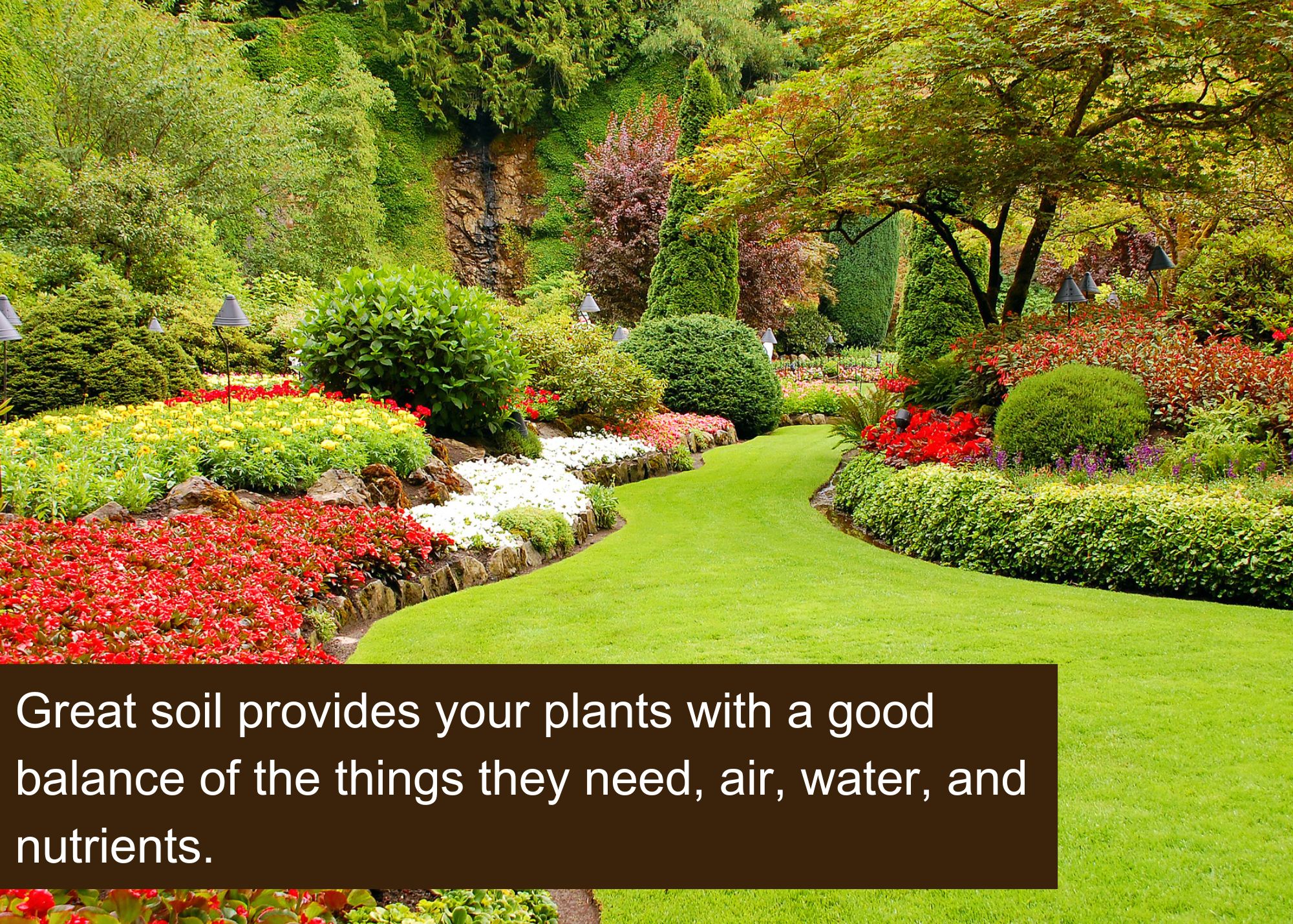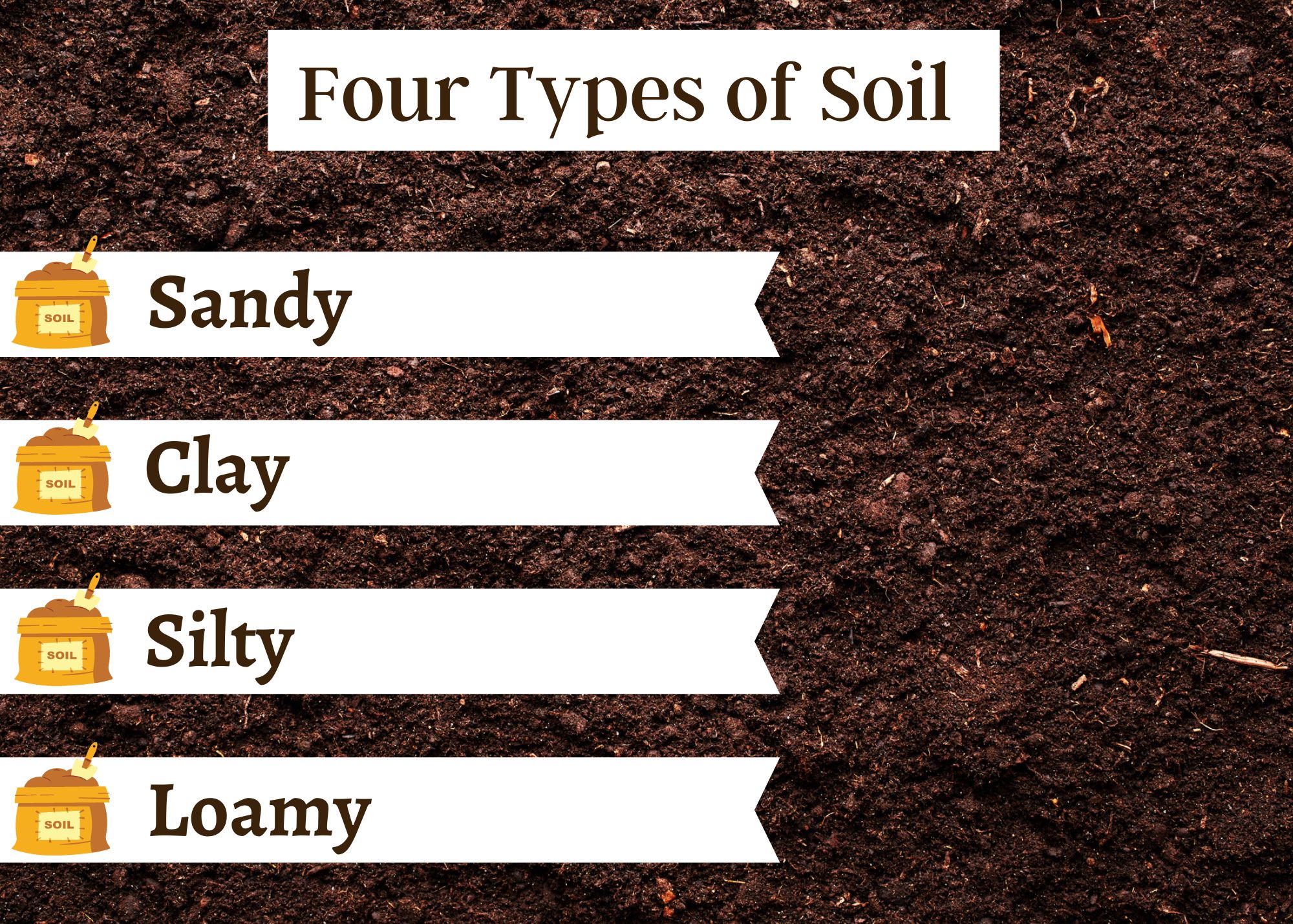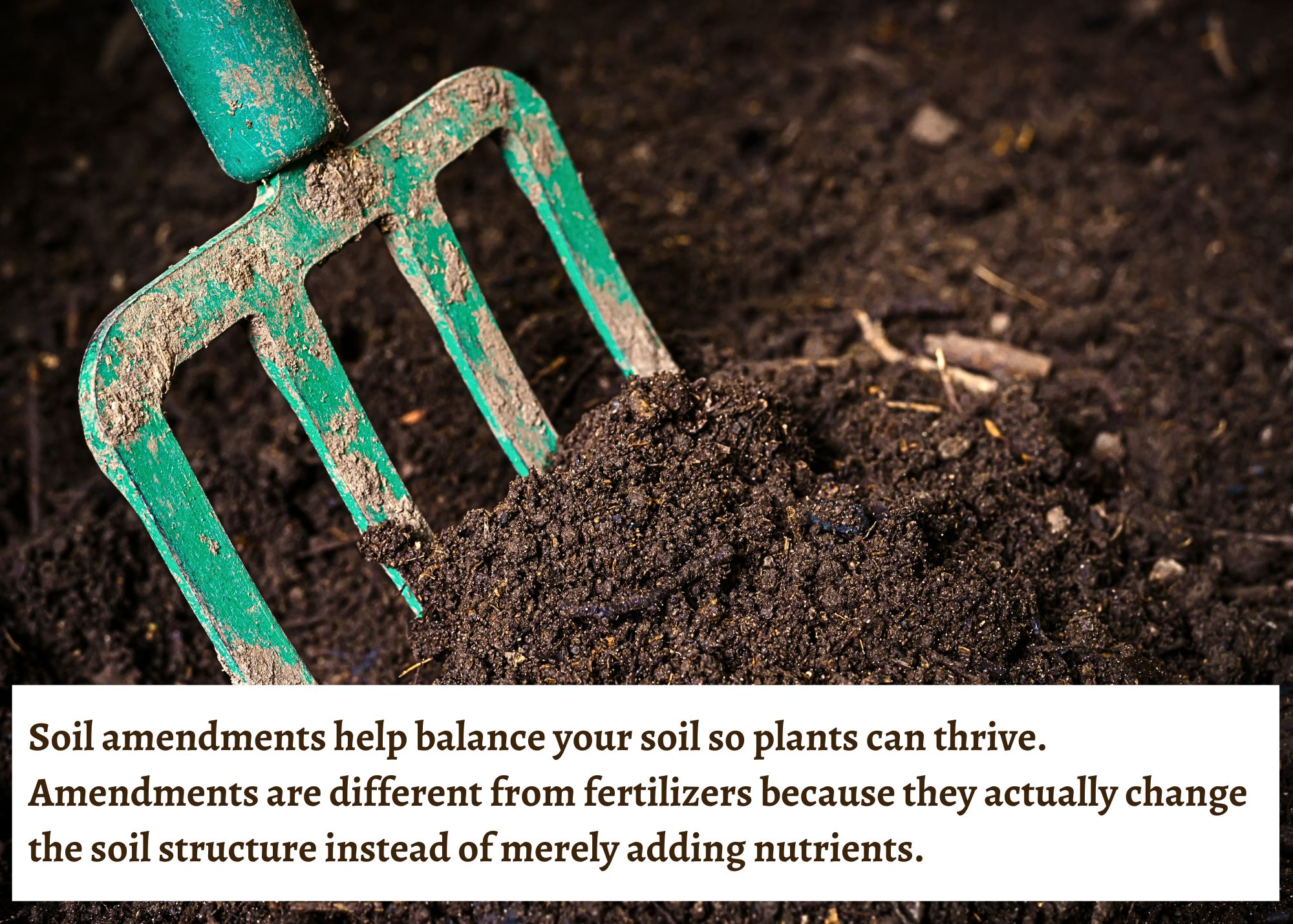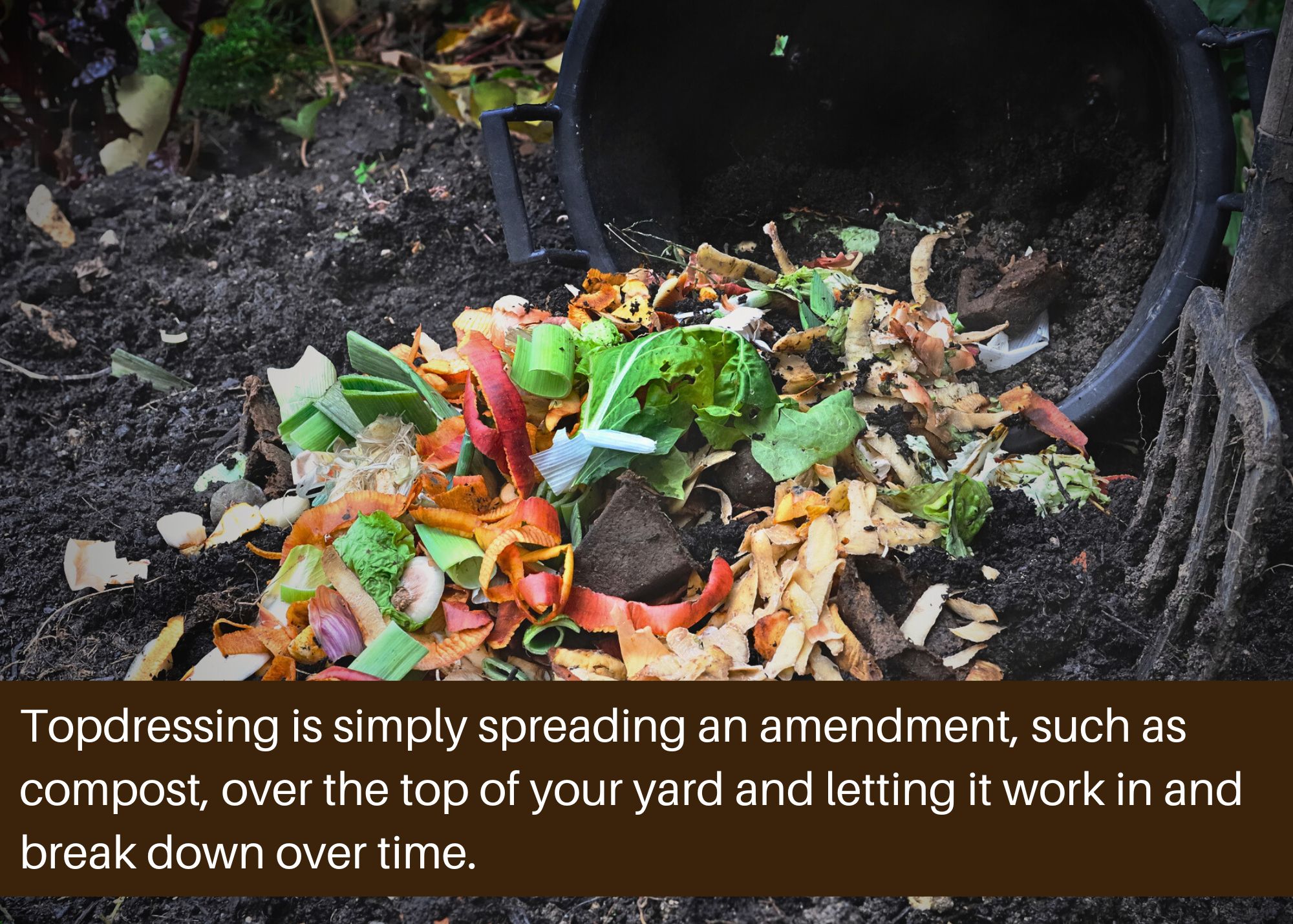Is It Really Just Dirt? A Beginner’s Guide To Lawn Soil Types And Amendments
We commonly overlook the grass beneath our feet when we think about our landscaping.
However, your lawn is likely the most significant landscaping element on your entire property!
That’s why a lush green yard makes such a difference in the overall appearance of your home.
And where does a lush, green yard start?
With the soil!
In this article, Zimmerman Mulch will go over why healthy soil is important, soil types, soil amendments, and more, so you can get on your way to a gorgeous yard.
Let’s get started!
Why Is Soil Important?
Healthy soil is the foundation for a beautiful lawn.
You can fertilize, water, aerate, and overseed, but if your soil is unhealthy, your lawn may still struggle, despite your best efforts.
What makes good soil?
A healthy soil ecosystem in which plants can thrive provides them with access to three things:
- Air
- Water
- Nutrients
Zooming in a little closer, plants need two categories of nutrients to survive and thrive:
- Macronutrients - Plants need these nutrients in large quantities to thrive. The macronutrients are:
- carbon
- oxygen
- hydrogen
- nitrogen
- phosphorus
- potassium
- calcium
- Magnesium
- Micronutrients - Plants need these in small amounts to thrive. These nutrients are:
- iron
- manganese
- molybdenum
- chlorine
- boron
- copper
- zinc
Great soil provides your plants with a good balance of the things they need, air, water, and nutrients.
The soil type may hinder or help grass and plants acquire the things they need. In the next section, we’ll talk about the four types of soil and how they behave.

Four Types Of Lawn Soil
There are four general types of lawn soil:
- Sand
- Clay
- Silt
- Loam
Sandy soils
Sandy soils are made up of angular particles, and they drain particularly well–often too well. The main problem with sandy soils is that water drains away too quickly, and the slick, angular particles cannot hold nutrients.
Plant roots tend to thrive well in sandy soils because this type of soil resists compaction and contains the oxygen roots require. However, extensive root systems may not do much good, as the soil lacks the nutrients essential to healthy overall plant growth.
Clay soils
Clay soils are made up of tiny, flattened particles. Because of their pancake-like shape, clay soils are prone to compaction, and because they compact so easily, they don’t drain well. When rain falls on clay soil, most of it runs off, and the little that penetrates the soil fills up all the spaces between particles and sits there. That leaves little room for oxygen and may cause roots to rot.
The upside of clay soil is that it holds nutrients and water well, unlike sandy soil, where everything drains away.
Silty soils
Silty soils contain medium-sized particles that are larger than those in clay soil but smaller than those in sand. Silty soils tend to behave like clay soils, sticking together and compacting easily. They tend to hold nutrients well but may become oversaturated with water.
Loamy soil
Loamy soil is what every landscaper wants! Loam is a rich, crumbly mix of silt, clay, and sand that is full of organic matter and retains moisture yet drains well. Loamy soil is full of nutrients and enables plants to grow and thrive.
The reason it’s important to know about soil types is that the type of soil you have affects whether or not your plants can get what they need to survive.
For instance, hard-packed, clay soil doesn’t breathe well, so your grass will struggle to get air. Sandy soil drains too quickly, so while your grass will be able to breathe, it won’t get the water or nutrients it needs. On the other hand, loamy soil contains a good mix of elements and offers a balance where plants can thrive.

Soil PH
Your soil’s pH, in other words, its acidity or alkalinity, also affects plant growth. That is because plants need nutrients to grow, and the soil's acidity affects how many nutrients they can absorb.
Some plants, such as blueberries or cabbages, thrive best in more highly alkaline or acidic soils. However, most plants do best in soil with an almost-neutral pH of 6.0 to 7.0. If soil is overly acidic or alkaline, some nutrients are “tied up,” and plants cannot absorb them.
Soil Testing
A soil test can be extremely helpful for assessing what type of soil you have. A good soil test tells you:
- Which basic type of soil do you have
- The pH level
- The available amounts of nutrients
- Recommendations on amending your soil
You can perform at-home soil tests, but these are generally less accurate or helpful than getting your soil tested professionally.
Amending The Soil Types
So what if your soil is too sandy? Or contains too much clay? Or is it so alkaline that nothing but cabbage grows? (And you don’t wish for a yard full of cabbages.)
Well, you’re not stuck!
Soil amendments help balance your soil so plants can thrive. Amendments are different from fertilizers because they actually change the soil structure instead of merely adding nutrients.
Here are some tips for amending different types of lawn soil so you can get closer to the beautiful black loam every landscaper dreams of.
(We’ll give you a hint: organic matter is a magic material that is helpful for all soil types! Mulch, manure, compost, topsoil, mushroom soil, shredded leaves…it’s all great stuff!)

- Sandy soil
The key to amending sandy soil is to help it retain moisture and nutrients better. You can do this by adding organic materials such as manure, compost, shredded leaves, or even sawdust.
Organic matter helps sandy soil stick together, retain moisture better, and add essential nutrients.
For sandy or clay soil, you may be tempted to simply add the opposite material (sand to clay and clay to sand,) thinking it will balance things out. However, this is not a great idea.
Mixing clay and sandy soil often results in a concrete-like result that compacts like a brick. Adding organic material is a much better solution for both types of soil.
- Clay soil
The trick for clay soil is getting it to drain. Like sandy soil, adding organic matter to clay soil helps improve its structure and nutrient content.
Adding gypsum to clay soil can help loosen it and promote water and root penetration. It can also add needed calcium to the soil.
- Silty soil
The best option for improving silty soil is (guess what?) organic matter. Adding organic matter to silty soil helps it retain the nutrients needed for plants and improves the structure of the soil.
- Acidic soil
If your soil is too acidic, lime is a great option. Sprinkling lime over your yard raises the pH, making it more alkaline and less acidic, so your plants can absorb the nutrients they need.
- Alkaline soil
If you need to fix up alkaline soil, elemental sulfur and aluminum sulfate can help bring the pH down a notch. Aluminum sulfate acts very quickly, changing the pH almost instantly, whereas elemental sulfur may take longer, up to a year, to work.
How To Apply Amendments To Your Yard
If you are preparing a new lawn for grass planting, you may be able to use a rototiller to work amendments into the soil. However, if you want to amend an established yard, you must use a method called topdressing.
Topdressing is simply spreading an amendment, such as compost, over the top of your yard and letting it work in and break down over time.

Before you topdress your yard, you want to make the conditions right so the amendment can fully work its way down into the soil and do its work. Here are a few tips:
- Mow your yard a little shorter than normal before topdressing.
- Dethatch your yard (rake out the layer of dead grass and organic matter on top of your soil).
- Aerate your yard (use an aerator to remove small plugs of soil from the ground, creating little holes that allow your soil to breathe.)
These things allow the amendment to permeate the grass and land right on the soil so it can work its way in and do its job.
Watering your lawn after topdressing is also recommended to help the amendment settle down into the soil.
Conclusion
Knowing about soil types and amendments is a great first step toward a gorgeous yard!
At Zimmerman Mulch, we know all about that. That’s why we offer amendments such as lawn soil and compost, as well as other outdoor products, which include:
And more!
If you want more resources, take a look at our other articles, which include:
- The Ultimate Beginner’s Guide To Topsoil And Compost
- A Guide To Landscape Lighting: Types, Techniques, And Tips
- Top 10 Most Commonly Asked Mulching Questions (Plus Some Pro Mulching Tips!)
- Ultimate Guide To Wood Pellets
Contact us or visit the store today for more information! We look forward to hearing from you.


